
What Can We Learn from Market Leaders in Eco-Friendly Beauty Packaging?
October 20, 2025 • Mike Lee
You want your brand to be more sustainable, but the world of eco-friendly packaging is confusing and expensive. You see market leaders making big moves, but you feel stuck, unsure how to start without a massive budget.
Market leaders teach us that successful eco-innovation isn't about one "perfect" solution. It's about a strategic, multi-faceted approach that balances recycled materials, smarter design, and a long-term vision for new material adoption.

Your insight about the investment period for new materials is the honest truth of this industry. I remember when we first started experimenting with PCR (Post-Consumer Recycled) plastics a few years ago. The initial batches were inconsistent in color and sometimes had a slight odor. It required a significant investment from us in new purification processes and quality control methods. A client, one of the first to partner with us on this, had to be patient. But together, we refined the process. Today, our PCR materials are almost indistinguishable from virgin plastic, and that early investment is now paying off for them as a key part of their brand story.
What Are the 7 R's of Sustainable Packaging?
You've heard terms like "recyclable" and "reusable," but you feel there's a bigger picture you're missing. You need a clear framework to think about sustainability beyond just the basics.
The 7 R's of sustainable packaging expand on the traditional three (Reduce, Reuse, Recycle) to create a more comprehensive guide: Rethink, Refuse, Reduce, Reuse, Refurbish, Recycle, and Rot.
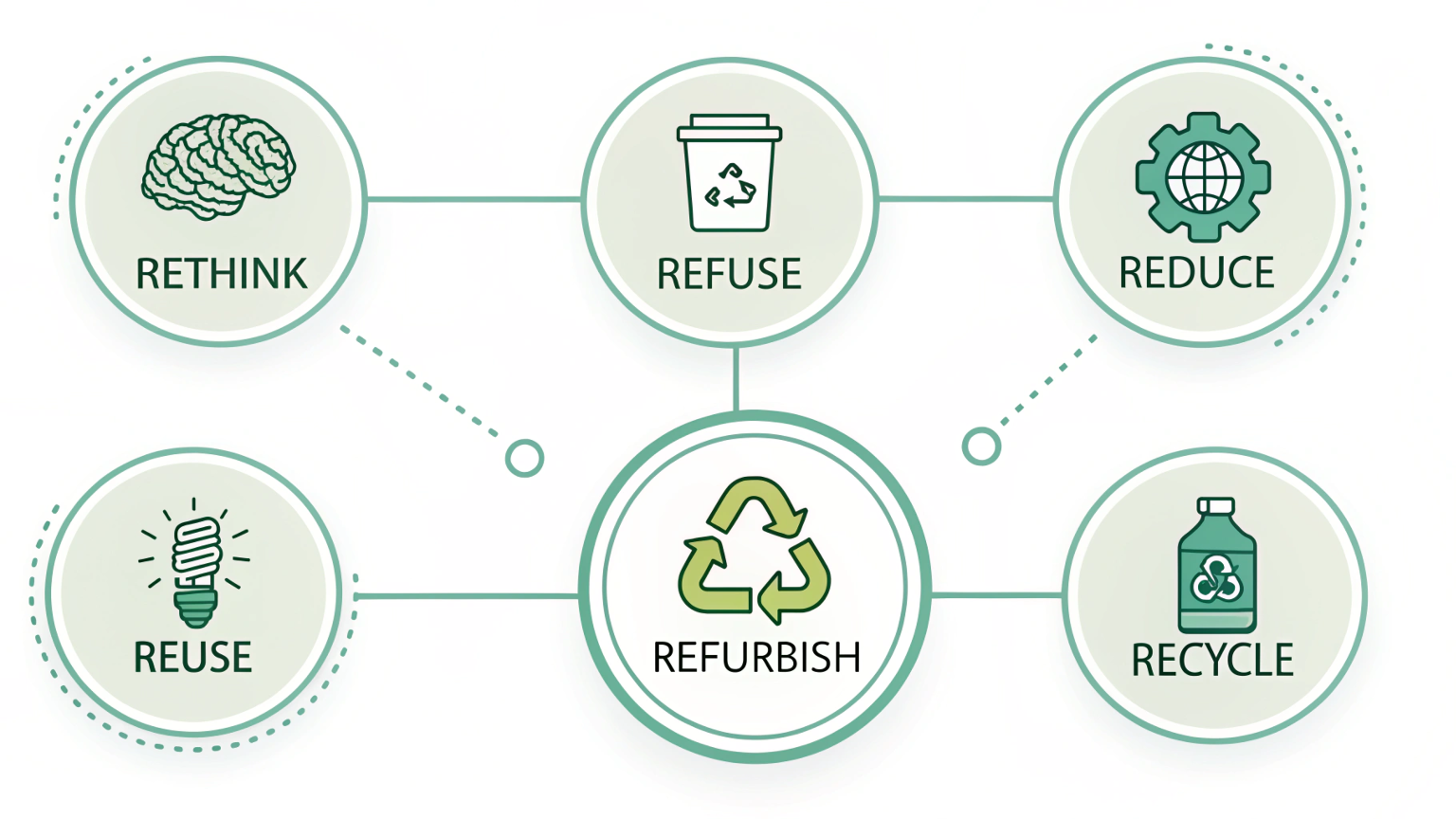
Thinking about sustainability through the 7 R's helps you see opportunities for innovation at every stage of your product's life cycle. It's a strategic checklist used by leaders to guide their packaging choices.
| "R" Principle | What It Means for Beauty Packaging | Market Leader Example |
|---|---|---|
| Rethink | Questioning the need for complex packaging from the start. | A brand switching from a box, bottle, and insert to a single, beautifully printed bottle. |
| Refuse | Rejecting unnecessary single-use items or problematic materials. | Lush Cosmetics' famous "naked" products, like solid shampoo bars, refuse packaging altogether. |
| Reduce | Using less material to create the same package. | Designing a bottle with thinner walls or removing the outer cardboard box. |
| Reuse | Creating packaging designed to be refilled and used many times. | Brands like Fenty Skin that offer refillable systems for their moisturizers and cleansers. |
| Refurbish | (More for electronics) The beauty equivalent is cleaning/sterilizing containers for reuse. | Terracycle's programs that collect and sanitize packaging for brands. |
| Recycle | Using materials that can be easily processed into new products. | Choosing PET or PP, materials widely accepted in recycling streams, over complex mixed materials. |
| Rot | Using biodegradable or compostable materials that break down naturally. | Still emerging; a brand using PLA-based bioplastics for secondary packaging (with careful labeling). |
What are the most impactful trends and innovations in cosmetology packaging?
You see a lot of "greenwashing," but you want to know what's real. Which eco-friendly trends are actually making a difference and changing how leading cosmetic brands operate?
The most impactful innovations are the widespread adoption of Post-Consumer Recycled (PCR) materials, the growth of user-friendly refill systems, and the move towards mono-material design for easy recycling.
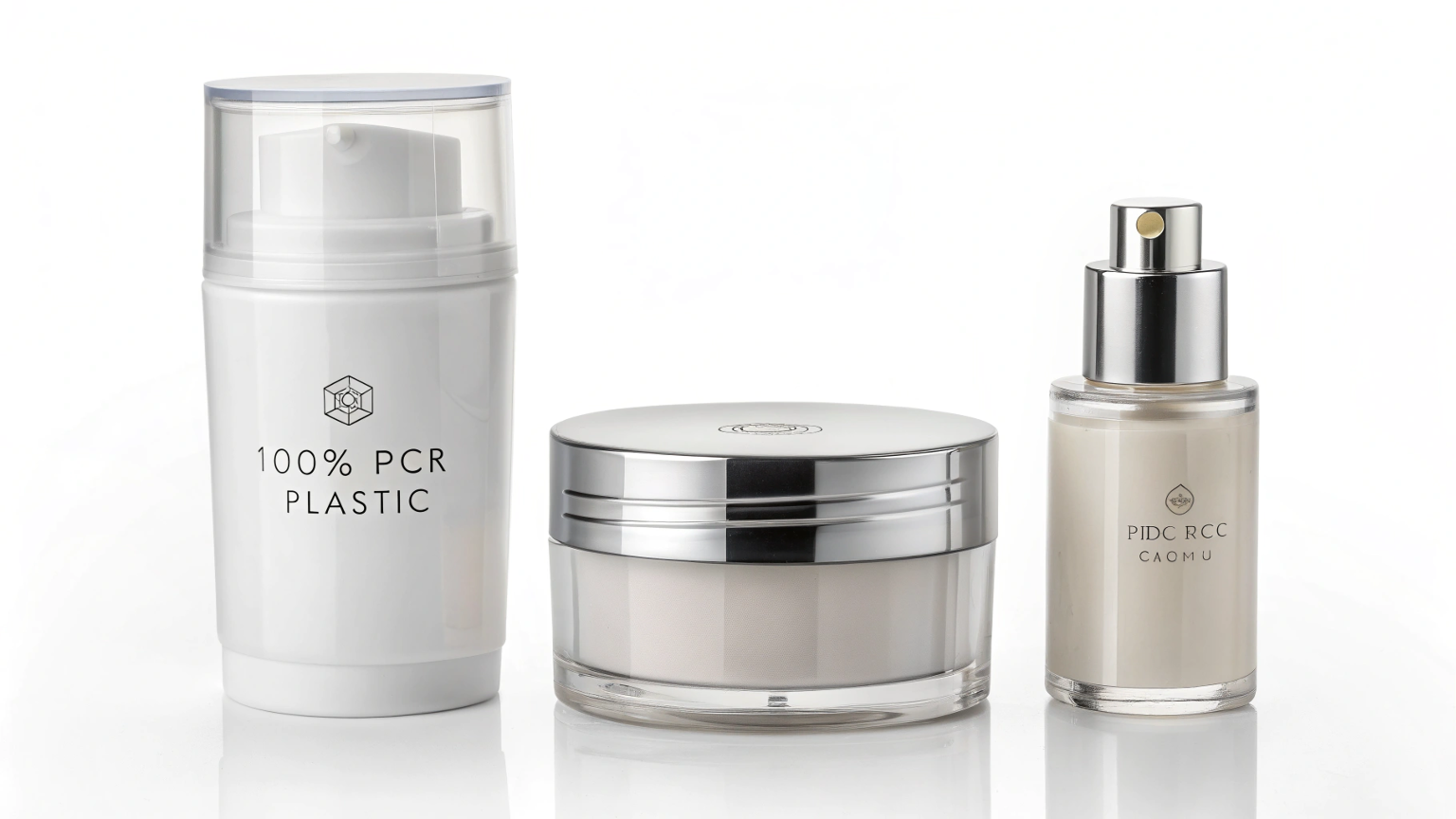
Market leaders aren't chasing every trend; they are focusing their efforts on three key areas that deliver tangible environmental benefits and resonate with consumers.
1. The Rise of PCR Materials
This is the biggest shift in the industry. Instead of using new, "virgin" plastic, brands are demanding packaging made from recycled plastic.
- How it works: We source used plastic waste (like old drink bottles), which is then cleaned, ground down, and re-processed into high-quality pellets. We can then use these pellets in our injection and blow molding machines.
- Why it's a win: It diverts waste from landfills and reduces the demand for new fossil fuels. Our ability to offer high-quality PE, PET, and PP from PCR sources is a direct result of our focused R&D investment.
2. Smart Refill & Reuse Systems
The "reuse" principle in action. Brands are designing durable and beautiful outer containers (the "mother" package) and selling the actual product in simpler, lower-impact refills (like pouches or pods).
- Examples: Dior, L'Occitane, and many others now offer refills for skincare and fragrances.
- Benefit: This drastically reduces packaging weight and waste over the customer's lifetime.
3. Designing for Recyclability (Mono-Material)
A beautiful package with five different types of materials is a recycling nightmare. The trend is simplification.
- What it means: Designing the bottle, cap, and pump from the same type of plastic (e.g., all PP). This makes it easy for recycling facilities to process the entire component without manual separation.
What trends are creating real opportunities in the eco-friendly packaging industry?
You're looking to the future. You want to know where the next big opportunity is, so you can build a brand that is not just sustainable today, but also a leader tomorrow.
The biggest opportunities lie in the development of new bio-based materials and the scaling of closed-loop supply chains. These trends promise to move the industry beyond recycling and towards a truly circular economy.
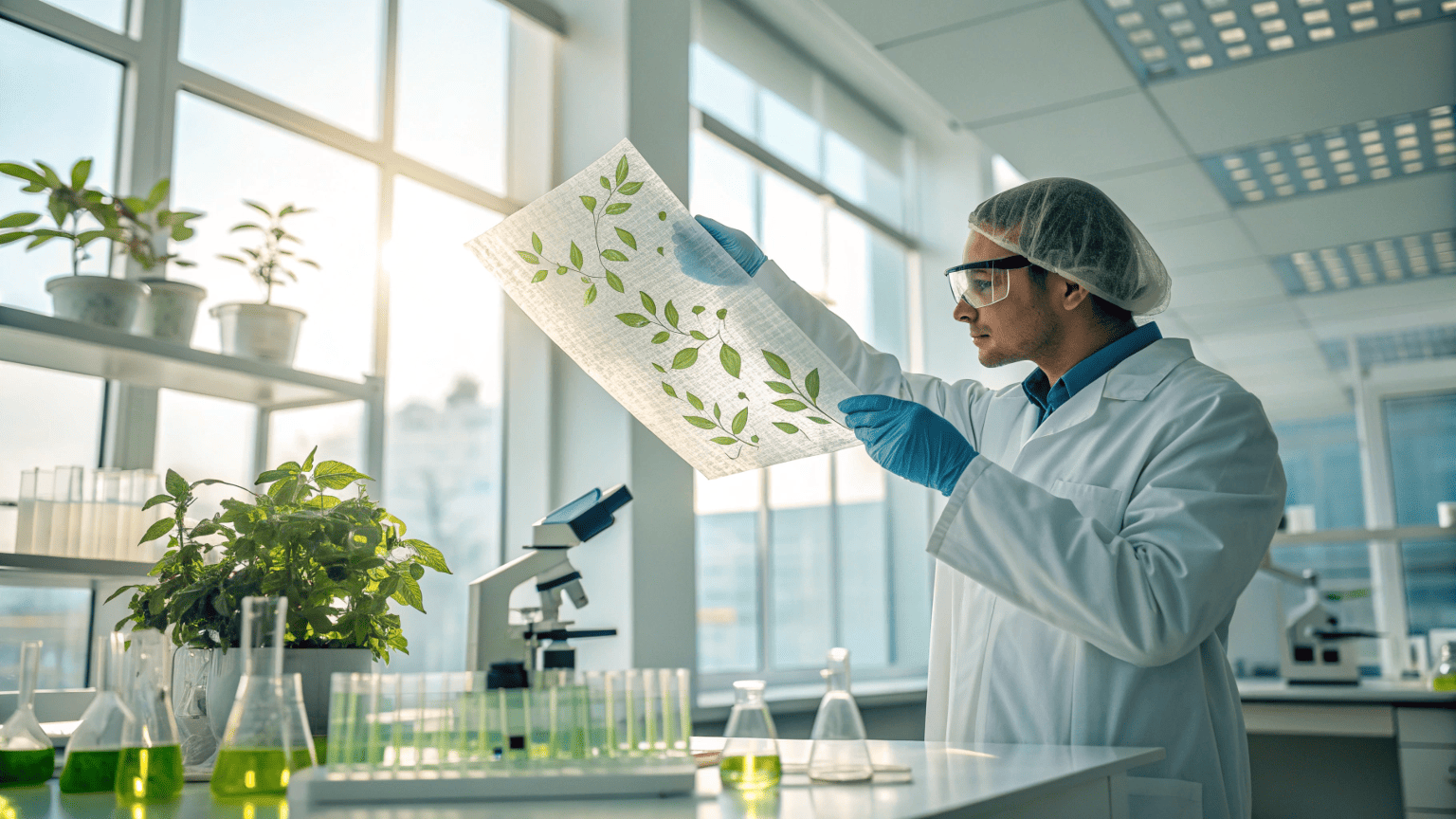
While PCR and refills are the focus today, forward-thinking brands are keeping a close eye on the next wave of innovation. Your insight about the "investment period" is especially relevant here.
1. New Material Applications (The Long-Term Play)
This is where true R&D happens. We are actively exploring and testing materials beyond traditional plastics.
- Bioplastics (PLA/PHA): Plastics made from plant sources like cornstarch or sugarcane. The challenge is they require industrial composting facilities, which are not yet widely available to consumers.
- Mushroom/Mycelium Packaging: A biodegradable material grown from mushroom roots. It's great for protective secondary packaging (like a replacement for Styrofoam) but isn't yet suitable for holding liquid formulas.
- Paper/Fiber Bottles: Companies are experimenting with creating pressure-resistant paper-based bottles. This technology is promising but still in an early, expensive phase.
As you noted, these are not "plug-and-play" solutions. They require long-term partnerships between brands and manufacturers like us to test, refine, and eventually scale.
2. Creating Closed-Loop Systems
The ultimate goal is a circular economy. This means creating systems where a brand takes responsibility for its packaging after use.
- How it works: A brand partners with a logistics company or a manufacturer to collect their empty bottles from consumers. The manufacturer (us) then cleans and recycles that specific material back into the same brand's new bottles. This creates a pure, high-quality, and infinitely recyclable loop. It is complex but represents the pinnacle of corporate responsibility.
Conclusion
Eco-innovation is a journey, not a destination. Leaders show us that the best path forward involves using proven solutions like PCR and refills today while investing in the groundbreaking materials of tomorrow.Understanding the Prompt
I'm starting by dissecting the prompt. The role of a ghostwriter for Rland is clear. The Markdown format is specified, including placeholders. The persona of Rland suggests a manufacturing expert. The insights point toward the challenge of new materials. I'm focusing on adopting the right tone, structuring the content logically, and using the insights to inform the core message.
Structuring the Content
I'm now outlining the blog post's structure. I'm focusing on the Markdown elements, especially the loop. I'm rephrasing the secondary titles as questions. The main title will be "Eco-Innovation in Beauty Packaging: Lessons from Market Leaders." I'm also mapping out how insights will be woven into the narrative.
Crafting the Introduction
I'm now writing the introductory paragraph and the main title, aiming to hook readers in with a relatable problem. The main title will be a variation of the provided one, perhaps with a question mark. My focus is on creating a sense of urgency for cosmetic brands, setting the stage for the solutions to be discussed.
Developing the Narrative
I'm now focusing on integrating Rland's persona into the content. I'm using "I" and "we" to create a sense of direct experience and expertise. Your insights on new material R&D and the "investment period" will be a central theme. I'll frame each section with the user's provided questions, weaving in real-world examples and the 7 R's of sustainable packaging.
Finalizing the Content
I'm now working on the "Dive Deeper" section. I'll use Markdown tables to present information in an organized way. My focus is on making the content as practical as possible, with plenty of specific examples. This is where I'll expand on the 7 R's and recent innovations.
Polishing the Final Draft
I'm now in the final stages of writing. I'm reviewing the post for clarity, tone, and adherence to the prompt. I'm ensuring all Markdown elements are correctly formatted. I am double-checking that the persona is consistent and that the post provides real value to the reader.
Written by
Mike Lee
You may also be interested in:

What Are the Top 5 Small Spray Bottle Trends for Skincare and Cosmetics in 2026?
Your new facial mist has a beautiful formula, but you're planning to use a standard
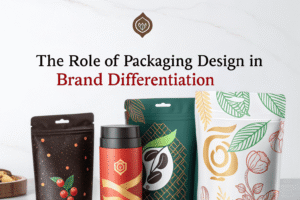
How Can Packaging Design Make or Break Your Brand?
Your product formula is a masterpiece, but on the shelf, it's invisible. You're watching less
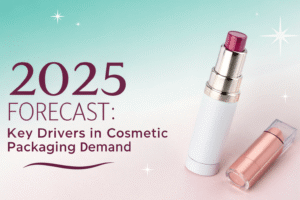
2025 Forecast: Key Drivers in Cosmetic Packaging Demand
You're trying to plan your brand's future, but the market is unpredictable. You're uncertain where
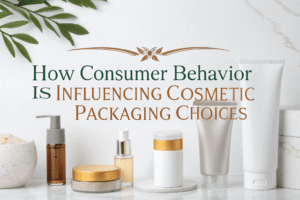
How Is Consumer Behavior Influencing Cosmetic Packaging Choices
You've designed beautiful packaging that you love, but it's not connecting with customers. You're struggling